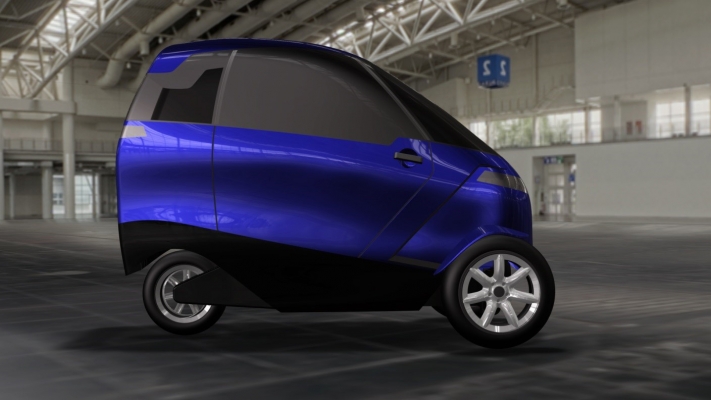OTREC gives "green light" to new hybrid electric vehicle

OTREC researchers and students from the Oregon Institute of Technology have teamed up with Green Lite Motors to test a next-generation hybrid car.
Green Lite Motors, a clean-tech start-up company based in Portland, Ore., has developed a small, three-wheeled, gas-electric hybrid vehicle based on the platform of a Suzuki Burgman scooter.
The vehicle is classed as a motorcycle, and has all the advantages of the smaller vehicle — it doesn’t take up a whole parking space, and it gives off fewer emissions — but it also has an advanced roll-cage design, giving it the safety and comfort of a standard passenger car. It has two wheels in the front, one in the back, and mileage possibilities greater than 100 miles per gallon.
The target market areas for this two-passenger vehicle are urban commute zones, where large numbers of people travel daily from suburban homes to city-based professions.
The tiny hybrid car could change the commuting experience, minimizing gas expenditure and cutting down the time people spend looking for parking.
Green Lite has developed two prototypes.
The first was based on a Suzuki Burgman 450 as the platform vehicle (shown right); the second was based on a larger platform, the Suzuki Burgman 650.
OTREC researchers James Long and Hugh Currin of the Oregon Institute of Technology carried out testing and troubleshooting on the second prototype, using a dynamometer to simulate road loads. Long and Currin tested the vehicle's hybrid interface system, making sure that it could seamlessly switch between using the internal combustion engine and the electric motor, as well as its embedded control system, making sure the user could digitally control both propulsion systems.
The researchers also tested the operational efficiency of the control algorithm and implemented some modifications related to initial system issues.
All testing was performed in OIT’s dynamometer lab, and in line with OIT’s mission, the project was used to educate undergraduate students in hybrid vehicle technology. Roughly 30 students were involved over the life of the project, with the opportunity to gain hands-on experience in engineering and prototype construction.
Several side projects were generated from this research and carried out by students; for more details about the educational outcomes of this research, click here to download the final report.
Problems with the vehicle's battery system eventually brought an early end to testing, due to budget. In light of the battery issues, the vehicle’s mechanical and electrical systems were tested and several issues were identified and corrected.
Despite the premature termination of the testing project, researchers were able to determine that Green Lite's prototype design shows promise as an electric vehicle. The kWh/100 mi performance is better than current two-person electric vehicles, and with the internal combustion engine brought in as a parallel hybrid drive, the electric system’s driving range is extended.
Researchers made some recommendations for modifications to subsequent prototypes, based on the results of the initial testing. For more details about the testing and the proposed modications, click here to visit the project page or download the final report.
